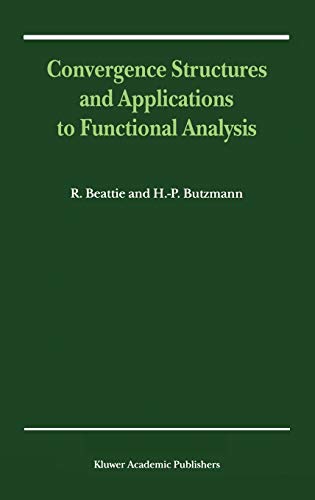Convergence Structures and Applications to Functional Analysis by R. Beattie
English | PDF | 2002 | 264 Pages | ISBN : 1402005660 | 21.4 MB
For many, modern functional analysis dates back to Banach's book [Ba32]. Here, such powerful results as the Hahn-Banach theorem, the open-mapping theorem and the uniform boundedness principle were developed in the setting of complete normed and complete metrizable spaces. When analysts realized the power and applicability of these methods, they sought to generalize the concept of a metric space and to broaden the scope of these theorems.
opological methods had been generally available since the appearance of Hausdorff's book in 1914. So it is surprising that it took so long to recognize that they could provide the means for this generalization. Indeed, the theory of topo- logical vector spaces was developed systematically only after 1950 by a great many different people, induding Bourbaki, Dieudonne, Grothendieck, Köthe, Mackey, Schwartz and Treves. The resulting body of work produced a whole new area of mathematics and generalized Banach's results. One of the great successes here was the development of the theory of distributions. While the not ion of a convergent sequence is very old, that of a convergent fil- ter dates back only to Cartan [Ca]. And while sequential convergence structures date back to Frechet [Fr], filter convergence structures are much more recent: [Ch], [Ko] and [Fi]. Initially, convergence spaces and convergence vector spaces were used by [Ko], [Wl], [Ba], [Ke64], [Ke65], [Ke74], [FB] and in particular [Bz] for topology and analysis.



